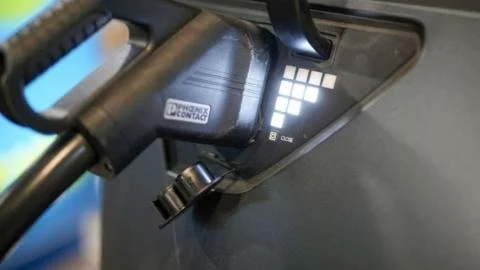Unlocking the Truth: Understanding the Battery Health of Pre-Owned Electric Vehicles
When Kerry Dunstan and his partner sought to purchase a used electric vehicle (EV), a crucial question arose – ”How’s the battery?” This inquiry guided them to a 2021 Nissan Leaf with only 29,000 miles and a robust state of health (SOH) rated at 93%. The couple invested £12,500 in this spacious EV, although Mr. Dunstan admits he prefers sportier models.
As interest in electric vehicles grows, evaluating battery health has become a top priority for buyers of used EVs. Many factors affect battery durability, such as previous owners’ habits—did they frequently fast-charge to 100%? This concern often deters potential buyers. Despite this, battery analytics companies, like Aviloo, are emerging with technology to accurately assess battery condition.
Aviloo offers services such as a premium test that monitors battery performance over a few days, or a quicker flash test that analyzes data in minutes. These tools provide independent evaluations that sometimes contradict information from the vehicle’s built-in analytics systems. Battery health deemed below 80% could still represent a good investment if priced appropriately, according to Aviloo’s insights.
Further experiences from EV owners like Lucy Hawcroft illustrate the disparity in battery condition reports between dealerships and independent assessments. Even with drops in SOH after purchase, many still enjoy suitable range for their needs.
The demand for detailed battery analytics is high among customers, as noted by David Smith of Cleevely Electric Vehicles. Independent SOH reports often aid in closing sales. It’s also important to note that battery components can sometimes be replaced without having to replace the entire battery, creating a cost-effective solution for maintaining older EVs.
Experts like Simona Onori from Stanford emphasize the importance of how batteries are charged, suggesting a potential balance in charging methods that is yet to be studied comprehensively. As battery technology evolves, improvements are substantial; newer batteries can last up to 10,000 charging cycles, while older models typically endure 500 to 1,000 cycles. Furthermore, used EV batteries can find second lives in applications such as energy storage, demonstrating that even when batteries reach the end of their automotive utility, they still hold value. Overall, better standardization in reporting battery health is needed to help consumers navigate the second-hand EV market with confidence.

